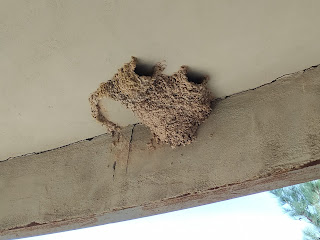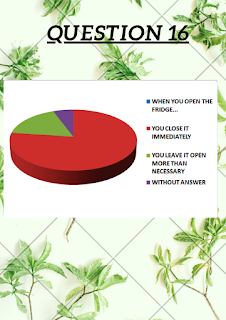Do you know how many species of birds come to see us at Mare Nostrum every day?
After years observing the courtyaard, the garden at the surroundings of the institute, we have realized that there are quite a few.
To observe them and be able to recognize, from the Department of Biology we have organized a Workshop on bird watching.
And what do we do there?
Here we tell you:
-We do three weekly workshops (Tuesday, Wednesday and Thursday) during the first recess.
- We have placed QR codes throughout the center that, by scanning them with the mobile, link to a descriptive card of the different birds seen in the center and surroundings. The files link to the SEO (Spanish Ornithology Society) website.
- We have laminated cards with a drawing, the common name and the scientific name of all the possible birds to observe, to help their recognition.
- Students can consult different bird guides and posters of aquatic and non-aquatic birds present in the biology department.
-We have two ornithological observation points with binoculars: one on the balcony of the Biology department, where you can see both the patio, the main entrance of the center and the facilities that are in front of the institute and another in the institute garden, in the back of our facilities.

- Attendees are given a sighting sheet, where the name of the birds appears and where they can write down the species observed, the number of specimens and the day of observation.
- We have put silhouettes of raptors on the gym´s windows to avoid collision and the possible death of small birds.
- We monitor the sparrow nest boxes placed on the balcony of the biology department since the 2007/2008 academic year.
- We are investigating pellets (undigested raptor remains) found in the windows of the janitor´s house, located in the institute´s garden.
The species that we have been able to observe are:
- Bow tie of the snows. Motacilla alba
- Black redstart. Phoenicurus ochruros
- House sparrow. Passer domesticus
- Yellow - legged seagull. Larus michaellis
-
Common blackbird. Turdus merula
- Southern King Shrike. Lanus meridionalis
- Audouin´s gull. Ichthyaetus audouinii
- Common kestrel. Falco tinnunculus
- Black starling. Sturnus unicolor
- Argentine parrot. Myiopsitta monachus
- Common greenfinc. Chloris chloris
- European turtledove. Streptopelia turtur
- Hoopoe. Upupa epops
- Common plane. Delichon urbicum
- Lame. Galerida cristata
It is curious to observe that some of these birds, especially the seagullas, appear at the tiem of the kid´s recess, waiting fot it to finish, to eat the remains that are left in the yard. So do sparrows.
The rest of species are more difficult to observe at patio time, but all the named species have been seen in our center.
To carry out the workshop, we have taken into account all the disinfection and safety distance measures that we must currently follow due to the coronavirus pandemic that we are experiencing. For this, all the attending students:
- They are wearing the mask.
- Maintains a safe distance.
- Hydroalcoholic gel is applied before touching the chipsm guides or binoculars.
- They use the binoculars individually and before lending them to another colleague they are disinfected with alcohol.
Comment that the breaks only last 20 minutes, wich often does not give time to do many things, since the teachers leave our classes, we have to take the material, then pick it up and arrive on time for our subsequent classes.
To have a little more time, each day workshop is the responsability of a teacher who does not class the next hour, although during the workshop we are usually present, almost always, the three of them.
After each workshop, the responsible teachers disinfect all the material for the next workshop.
Finally, comment that we are finding it very satisfactory to carry out this activity, since there are quite a few students who have come to the workshop, and many of them are already regular. Especially 1st ESO students.
We plan to shortly collaborate with a local NGO called Faunatura, wich contacted us in December to place more nest boxes, install a webcam inside one of those nest boxes to track what is happening inside in real time and place bird feeders in the garden area.
We are interested in knowing where we live, what species we live with.
We are interested in teaching how to look, because once you learn, it is difficult to stop doing it.



























































